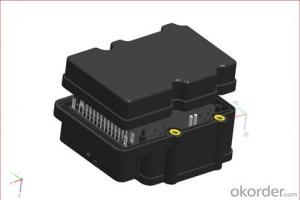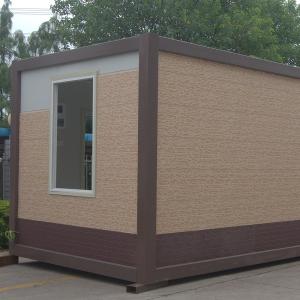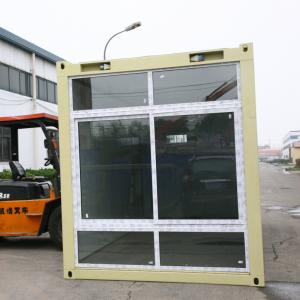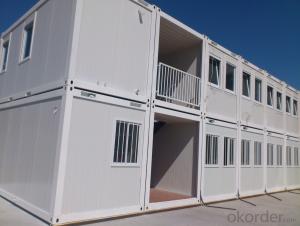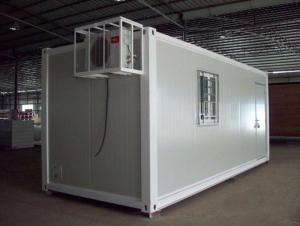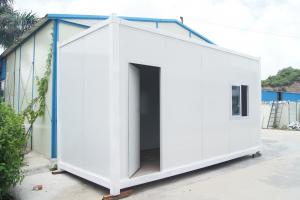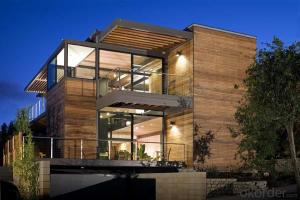ABS electrically controlled Unit connector
- Loading Port:
- China Main Port
- Payment Terms:
- TT OR LC
- Min Order Qty:
- -
- Supply Capability:
- -
OKorder Service Pledge
OKorder Financial Service
You Might Also Like
ABS electrically controlled Unit connector
1. Shorten the response speed of the electronic throttle.
2. Improve the electronic throttle's sensitivity.
3. Plug and play without external power supply.
4. 6modes/46degrees adjustable.
5. Full accelerating mode/semi accelerating mode/original /accelerator mode/economic mode available .
Noted: 1. Skoda 1.4T or 1.8T, 2.0T is different. Please leave a messege of your car model so we can match.
2. No matter what your models, we all have matching products.
Installation guide (Take imported New SantaFe as example)
- Q:Can container houses be built with a contemporary gym or fitness area?
- Yes, container houses can be built with a contemporary gym or fitness area. With proper planning and design, containers can be transformed into functional and modern spaces that can accommodate various purposes, including fitness areas. By utilizing the available space efficiently and incorporating necessary amenities and equipment, container houses can be customized to include a gym or fitness area that meets contemporary standards.
- Q:What are the maintenance requirements for container houses?
- The maintenance requirements for container houses are relatively low compared to traditional homes. However, there are still a few aspects that need regular attention. Firstly, it is important to regularly inspect the exterior of the container house for any signs of damage, such as dents or rust. If any damage is found, it should be repaired promptly to prevent further deterioration. Additionally, the exterior should be cleaned periodically to remove dirt, dust, and debris that could accumulate over time. Secondly, the roof of the container house should be checked regularly for leaks or any damage to the sealing. Any leaks should be addressed immediately to avoid potential water damage inside the house. Thirdly, the insulation of the container house should be inspected periodically to ensure it is in good condition. If there are any signs of wear or damage, it should be repaired or replaced as necessary to maintain adequate insulation. Furthermore, the plumbing and electrical systems should be regularly checked for any issues. This includes inspecting pipes, fittings, and connections for leaks or damage, as well as testing electrical outlets, switches, and appliances to ensure they are functioning properly. Lastly, container houses may require occasional pest control measures, especially if they are located in areas prone to insects or rodents. Regular inspection and treatment can help prevent infestations and maintain a clean living environment. Overall, while the maintenance requirements for container houses are relatively minimal, regular inspections and timely repairs are essential to ensure the longevity and functionality of the structure.
- Q:Can container houses be built in urban environments?
- Container houses are indeed suitable for urban environments, and they have become increasingly popular in cities due to their affordability, sustainability, and flexibility. These houses are constructed by repurposing shipping containers, which are readily available and cost-effective. They can be easily customized and designed to integrate seamlessly into the existing urban landscape. In urban areas, container houses have numerous advantages. Firstly, they are an environmentally friendly choice as they repurpose containers that would otherwise go to waste. Additionally, container houses can be built using energy-efficient materials and incorporate sustainable features like solar panels and rainwater harvesting systems, which are highly desirable for eco-conscious urban residents. Moreover, container houses are highly adaptable and can be tailored to fit various urban spaces. They can be stacked or combined to create multi-story structures, maximizing the use of limited land. This versatility also makes container houses suitable for urban infill projects, where vacant lots or underutilized spaces can be transformed into affordable and visually appealing housing options. Furthermore, container houses can be aesthetically pleasing and blend harmoniously with urban neighborhoods. With thoughtful design and architectural elements, container houses can seamlessly coexist with traditional houses and buildings. Many urban areas have even embraced container house developments as a means to rejuvenate neighborhoods and provide affordable housing solutions. However, it is important to note that building container houses in urban environments may require compliance with local building codes and regulations. These regulations ensure the safety, structural integrity, and well-being of residents. It is crucial to collaborate with experienced professionals who are knowledgeable about container house construction and familiar with local regulations. In conclusion, container houses can be successfully constructed in urban environments, offering affordability, sustainability, and flexibility. With careful planning, design, and adherence to local regulations, container houses can contribute to the creation of vibrant and affordable urban communities.
- Q:Are container houses eco-friendly?
- There are multiple reasons why container houses can be considered eco-friendly. Firstly, they are built using repurposed shipping containers, which reduces the need for traditional construction materials like bricks, concrete, and wood. By reusing these containers, we effectively decrease the demand for new raw materials and minimize the environmental impact associated with their extraction and production. Secondly, container houses have a smaller carbon footprint compared to traditional homes. The manufacturing process of shipping containers results in significantly fewer greenhouse gas emissions compared to the production of bricks and concrete. Moreover, container houses often require less energy for heating and cooling due to their compact size and efficient insulation, leading to lower energy consumption and reduced carbon emissions. Furthermore, container houses can be designed with energy efficiency in mind. They can be equipped with solar panels to generate renewable energy, rainwater harvesting systems to decrease water consumption, and green roofs or living walls to enhance insulation and support biodiversity. In addition, container houses are easily transportable, providing greater flexibility and minimizing the need for new construction. This mobility can assist in reducing urban sprawl and preserving natural habitats by enabling people to reside in existing developed areas. However, it is vital to note that the eco-friendliness of a container house also depends on various factors, including the materials used for insulation, the energy sources for heating and cooling, and the overall design and construction practices. It is crucial to prioritize sustainable and environmentally friendly choices throughout the entire construction process to ensure the eco-friendliness of container houses.
- Q:Are container houses suitable for guest houses?
- Yes, container houses can be suitable for guest houses. They offer a unique and modern aesthetic, can be easily customized to fit specific needs, and are often more cost-effective compared to traditional construction methods. Additionally, they can be quickly assembled and disassembled, making them a convenient solution for temporary or seasonal guest accommodations.
- Q:Can container houses be designed with a traditional or rustic style?
- Yes, container houses can be designed with a traditional or rustic style. By using various exterior finishes, such as wood or stone cladding, and adding architectural elements like gable roofs, porches, or window shutters, container houses can be transformed to have a traditional or rustic aesthetic. Interior design elements, such as using reclaimed materials, warm color schemes, and rustic furnishings, can further enhance the traditional or rustic style of a container house.
- Q:Are container houses suitable for retail stores?
- Yes, container houses can be suitable for retail stores. They offer several advantages such as affordability, durability, and mobility. Container houses can be customized to meet the specific needs of a retail store, providing a unique and trendy shopping experience for customers. Additionally, the compact size of containers allows for easy transportation and relocation, making it convenient for businesses to adapt to changing market demands or relocate to different areas.
- Q:What is the size of a typical container house?
- A typical container house can vary in size depending on the specific design and purpose. However, most container houses are constructed using standard shipping containers, which come in two common sizes: 20 feet and 40 feet in length. A 20-foot container house typically measures about 160 square feet of interior space, while a 40-foot container house offers around 320 square feet of interior space. These dimensions provide a basic idea of the size range for container houses, but it is important to note that container houses can be customized and modified to create larger or smaller living spaces as desired. Additionally, container houses can also be combined or stacked to create multiple levels or larger floor plans. This flexibility allows for a variety of sizes and layouts, making container houses suitable for various needs, from tiny homes to larger family residences or even commercial spaces.
- Q:Can container houses be designed to have a spacious dining area?
- Absolutely! It is entirely possible to design container houses with spacious dining areas. Although the size and layout of containers may initially seem limiting, with the right design and planning, a comfortable and roomy dining area can be created. One approach to maximize space in container houses is through open concept designs. By removing unnecessary walls and partitions, the dining area can seamlessly blend with the adjacent living or kitchen area, resulting in a sense of spaciousness. Additionally, incorporating large windows or glass walls can bring in natural light and visually enlarge the space, making it feel more open and airy. Another consideration is the use of multi-functional furniture. Opting for dining tables and chairs that can be folded or collapsed when not in use allows for a more open and flexible space. Storage solutions, such as built-in shelves or cabinets, can also help declutter the dining area, making it appear more spacious. Moreover, employing creative storage solutions can free up floor space and contribute to a more open dining area. For instance, hanging pots and pans or utilizing vertical storage for dishes and utensils can maximize the kitchen's available space, allowing for a larger dining area. In conclusion, with careful planning, innovative design solutions, and the use of multi-functional furniture, container houses can be designed to include spacious dining areas. The key is to optimize the available space and create a functional and visually appealing layout that maximizes both comfort and functionality.
- Q:Are container houses suitable for yoga or wellness retreats?
- Container houses can be suitable for yoga or wellness retreats. The open and flexible design of container houses allows for the creation of spacious and peaceful environments, perfect for hosting yoga sessions and wellness activities. Additionally, their eco-friendly nature aligns well with the values often associated with these retreats. With proper interior design and customization, container houses can provide a unique and inviting space for participants to relax, rejuvenate, and connect with nature.
1. Manufacturer Overview |
|
|---|---|
| Location | |
| Year Established | |
| Annual Output Value | |
| Main Markets | |
| Company Certifications | |
2. Manufacturer Certificates |
|
|---|---|
| a) Certification Name | |
| Range | |
| Reference | |
| Validity Period | |
3. Manufacturer Capability |
|
|---|---|
| a)Trade Capacity | |
| Nearest Port | |
| Export Percentage | |
| No.of Employees in Trade Department | |
| Language Spoken: | |
| b)Factory Information | |
| Factory Size: | |
| No. of Production Lines | |
| Contract Manufacturing | |
| Product Price Range | |
Send your message to us
ABS electrically controlled Unit connector
- Loading Port:
- China Main Port
- Payment Terms:
- TT OR LC
- Min Order Qty:
- -
- Supply Capability:
- -
OKorder Service Pledge
OKorder Financial Service
Similar products
New products
Hot products
Hot Searches
Related keywords
